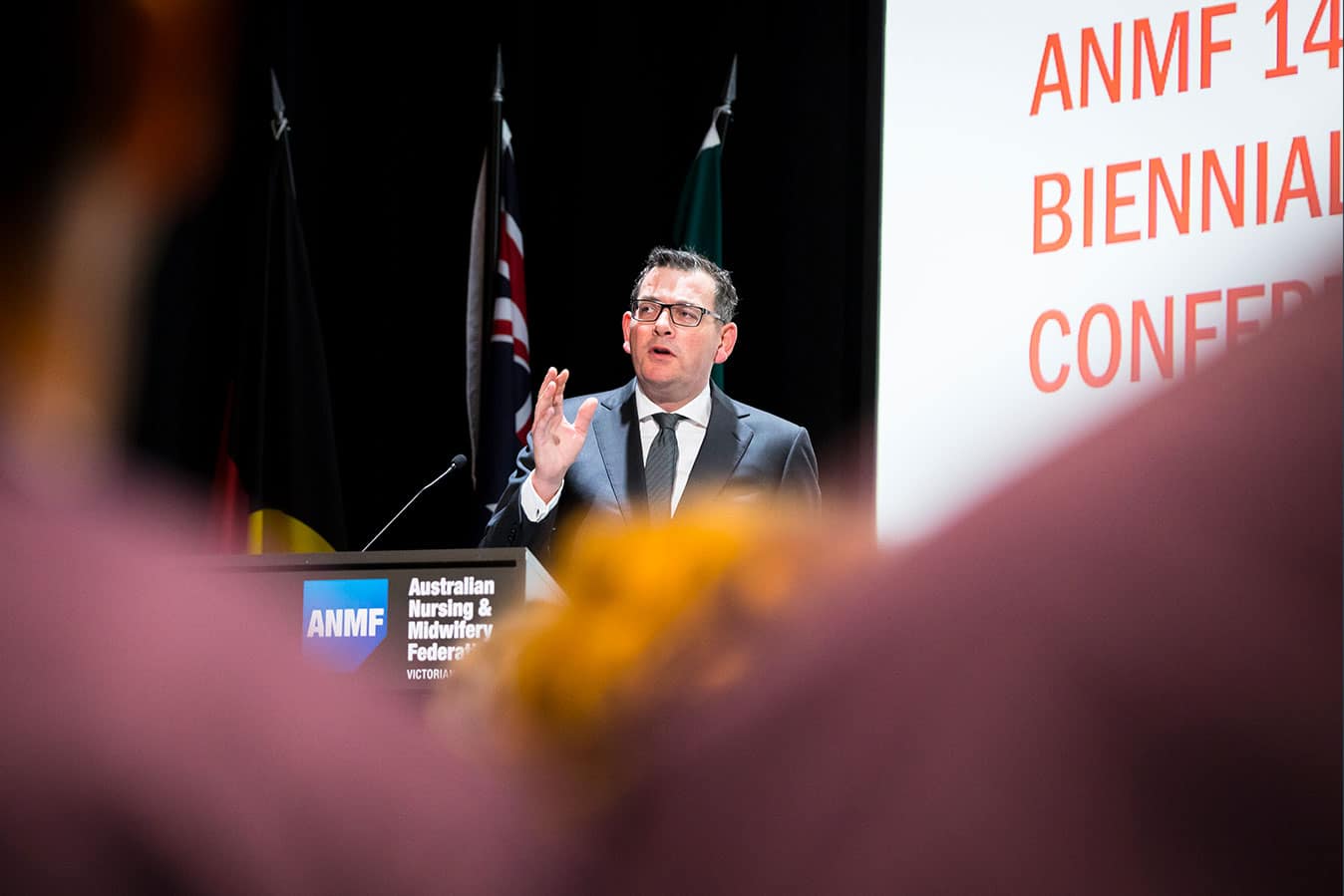Victorian Premier Daniel Andrews has paid tribute to the valuable contributions made by nurses and midwives and the leadership and influence of the ANMF (Vic Branch) in driving policy development that helped achieve major reforms such as landmark legislated nurse and midwife-to-patient ratios across the state’s public hospitals back in 2015.
Officially opening the Australian Nursing and Midwifery Federation’s (ANMF) 14th Biennial National Conference in Melbourne last Thursday, Mr Andrews told delegates many of the Victorian government’s key reforms over the past five years had been shaped by the voice of the union and reflected a profound respect for the professions.
“Investing in nurses and midwives, investing in our health system is always smart,” Mr Andrews declared.
“For care, safety, quality, for dignity. But it’s also a great economic driver. This is one of the biggest sectors in our Victorian economy and it’s smart on so many levels to listen to nurses and midwives [and] let them into the policy development process.”
Reflecting on May’s federal election, Mr Andrews said the nation was being run by a federal government that does not properly fund health and that it needed to commit to sharing funding costs and responsibility equally with state governments under a 50/50 split to allow the system to work more efficiently.
“The policies put forward by the current government, despite the fact we are trying to and I think succeeding in having a productive relationship with the Prime Minister, they are not in any way making your work easier,” he said.
“If you want Medicare to work then the federal government has got to have an equal stake in Medicare not working. At the moment, you can underfund Medicare and don’t worry, the state governments will provide through the public hospital system a safety net.
“The problem with that is that the system comes under enormous strain and indeed beyond that it is the most expensive level of care, it is the most inefficient way to provide primary care for the results of not getting primary care.”
Mr Andrews argued the system could work much better if health funding costs were shared equally between state and federal governments.
Focusing on aged care and the current Royal Commission, Mr Andrews said the Victorian government, the only jurisdiction in Australia to date to implement ratios across its public aged care homes, was expanding its footprint in the sector.
“The level of care, our market share, is actually growing and I can’t help but think if that were the case at a national level then there’d be a lot more care in aged care. We perhaps wouldn’t be having the Royal Commission that we’re having at the moment.
“This Royal Commission is an important step. We have a loud voice in it as well and I know various ministers in our team share the concerns that many in the sector share. Let’s hope that it leads to not just reports that gather dust but real action to provide dignity, certainty, safety and quality care to often the most vulnerable in our Victorian and indeed our Australian community.”
During his address, Mr Andrews also shone a light on Victoria’s current Mental Health Royal Commission, the only one of its kind in the country.
“Mental health is broken, the system is failing so many people. It is not savings lives as much as it is costing lives because it is so broken and fundamentally compromised,” Mr Andrews told delegates.
Mr Andrews said the government would implement all of the recommendations handed down by the Mental Health Royal Commission, with an interim report due in December and a final report at the end of next year.
“This will be about more beds, it will be about workforce reform, about more funding, it will be about better connections between primary care funded by the Commonwealth and acute care funded by the state. It will be about more community based models of care [and preventing people from crisis and ill health.”
Mr Andrews concluded his speech by outlining his government’s Nursing and Midwifery Workforce Development Fund and its commitment to supporting various initiatives and workforce challenges.
He took the opportunity to announce that as part of an expansion of a post-graduate midwifery employment model funding will be provided for an extra 150 places dedicated to midwives in country communities to ensure they’re undertaking clinical placements in communities where they’re needed the most and are no longer out of pocket.
“Particularly in rural and regional Victoria and particularly for midwives, if you are on clinical placement, if you’re training, you’re not getting paid,” he explained.
“You can be substantially out of pocket. That means many of those clinical placement shifts, many of those clinical placements, go unfilled. We can’t get people qualified, we can’t get people working in midwifery in regional communities.









